How to Plant, Grow, and Care for Chrysogonum virginianum
Chrysogonum virginianum, also known as green-and-gold or golden star plant, is a wonderful ground cover with yellow, star-shaped flowers. See how easy it is to grow in Kevin Espiritu's guide for planting and care.

Contents
When it comes to sprawling ground covers, the choices are endless, and Chrysogonum virginianum, or green and gold, is a gorgeous choice. Due to its dainty, star-shaped yellow flowers with spooned leaves, it makes for a sense and beautiful ground cover.
Native plants to the eastern United States, from New York to Florida and Louisiana, this perennial evergreen ground cover is great forage for native birds. Its green berries are snatched up in bird beaks and spread around. Its bright yellow flowers are a delight in native plant gardens and woodland gardens from spring through fall.
Without further ado, let’s learn how to care for this incredible lawn alternative!
Plant Overview
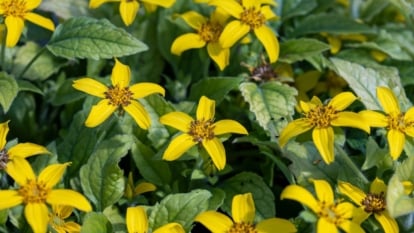
|
Plant Type
Perennial ground cover
Family
Asteraceae
Genus
Chrysogonum
Species
Chrysogonum virginianum
|
Native Area
Eastern USA
Exposure
Partial to full shade
Height
6-12”
Watering Requirements
Moderate
|
Pests & Diseases
Root rot, powdery mildew, downy mildew, snails, slugs
Maintenance
Low
Soil Type
Well-draining, rich
Hardiness Zone
5-9
|
What is Chrysogonum Virginianum?
Scientifically known as Chrysogonum virginianum, with “Chrys” meaning “gold” and “gon” meaning “offspring”. It’s named after the kind of flowers that it produces during its blooming time. Belonging to the Asteraceae family, it’s a perennial herb with hairy leaves and clusters of gorgeous and bright yellow flowers that grow from leaf axils.
Native Area
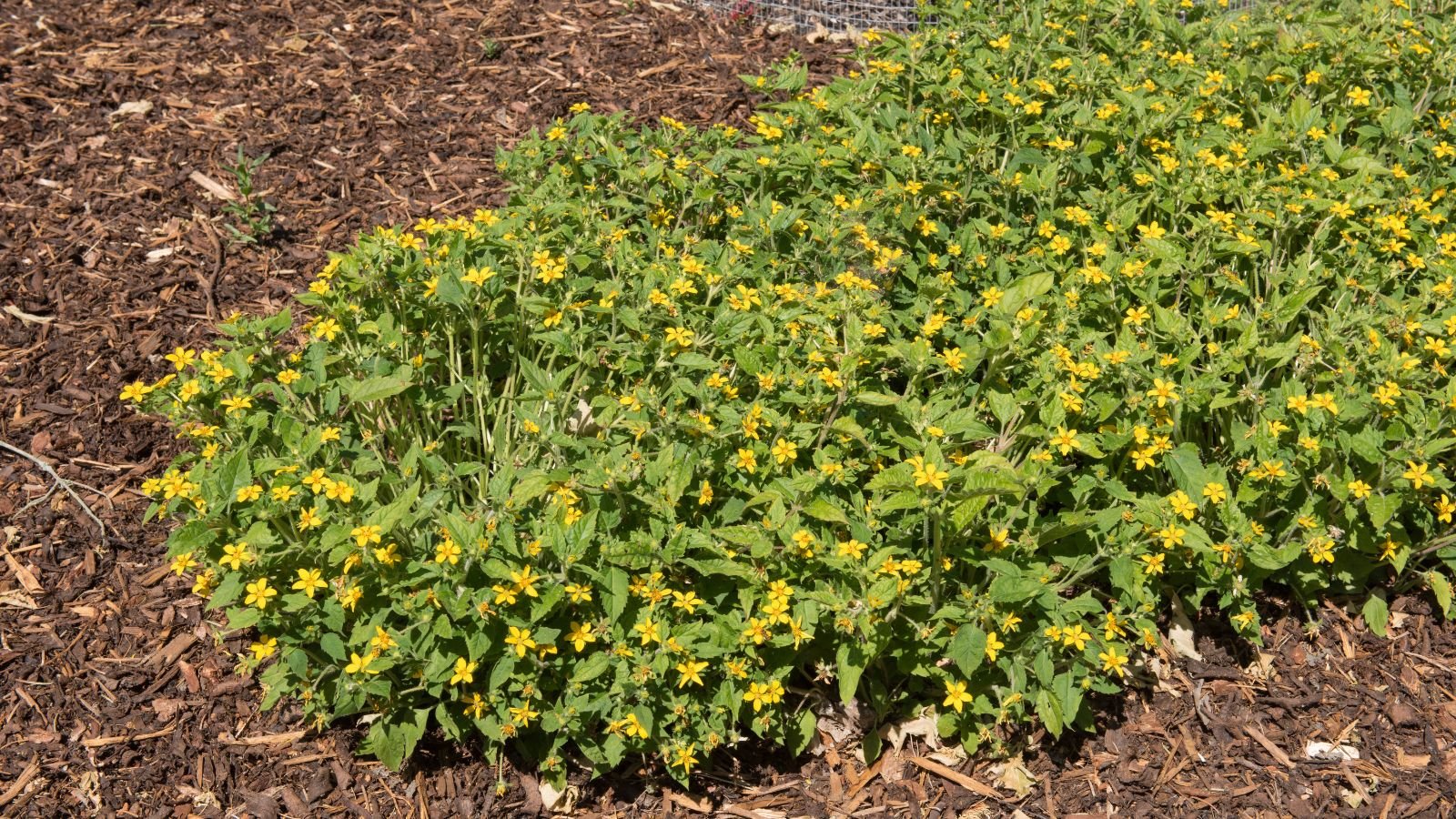
Also known as the golden star plant, it is native to the eastern United States. Its native habitat occurs from New York State to Rhode Island, and down to Florida and Louisiana. Therefore, it’s an excellent addition to native plant gardens, woodland gardens, woodland paths, and shade gardens. They can sometimes grow nicely in rock gardens too!
Characteristics
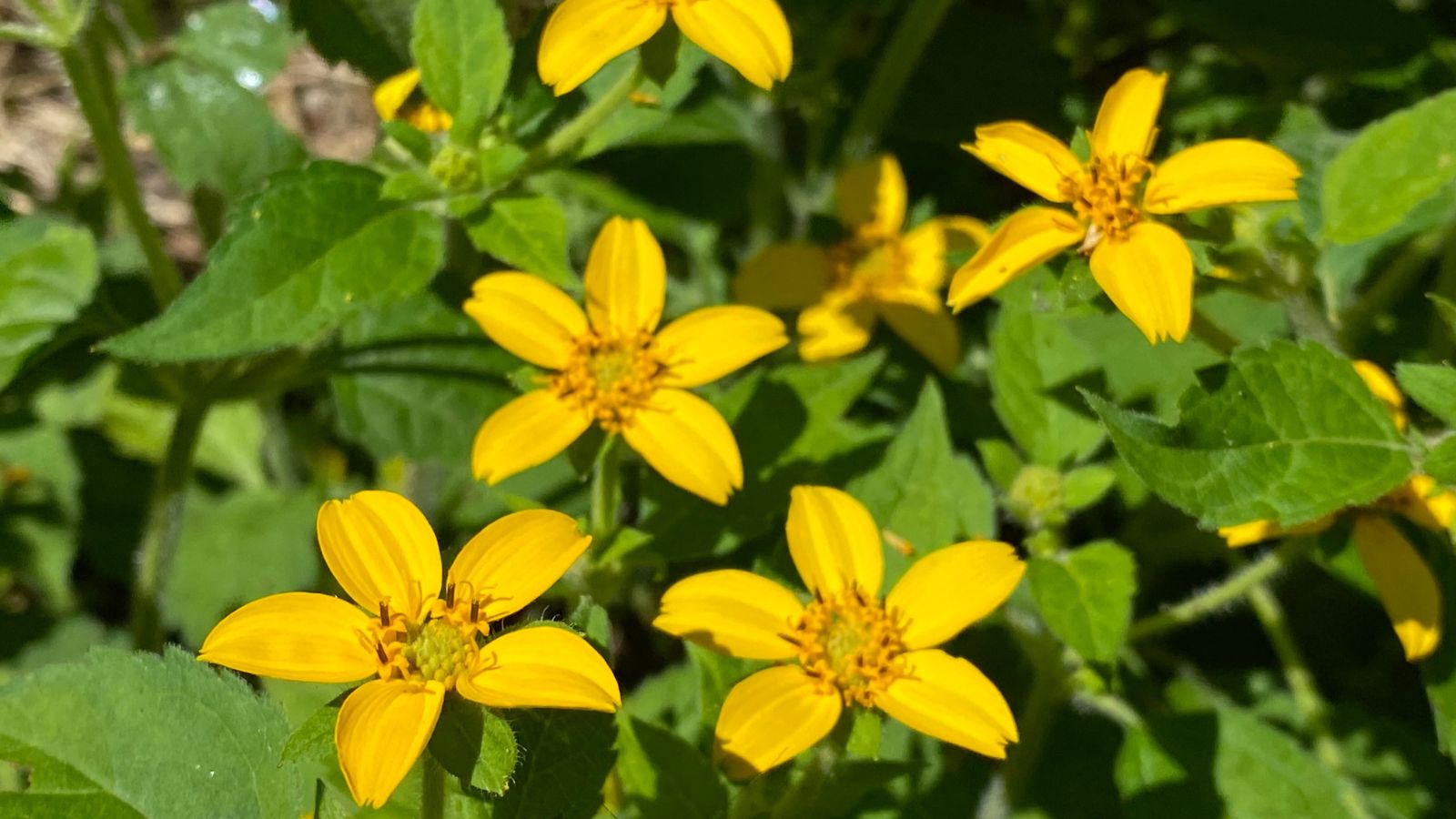
For Zones 5 to 9, this creeping native perennial shows off yellowish daisy-like flowers from late spring to fall. The plant typically forms dense mats, reaching about six to ten inches. The leaves are small and green, a great contrast to the flowers. It’s easy to propagate in spring and a quick spreader. It likes rich, loamy, moist soil in partial shade to full sun – more shade if planted in southern areas.
Varieties
Before we get into how to care for Chrysogonum virginianum, also known as dwarf crested iris, let’s look at the different varieties available. There are three main varieties of this plant with yellow petals, categorized by where they originated. While all form a foliage mat, some are bushy, and others have a more distinct best ground cover appearance.
Chrysogonum virginianum var. australe
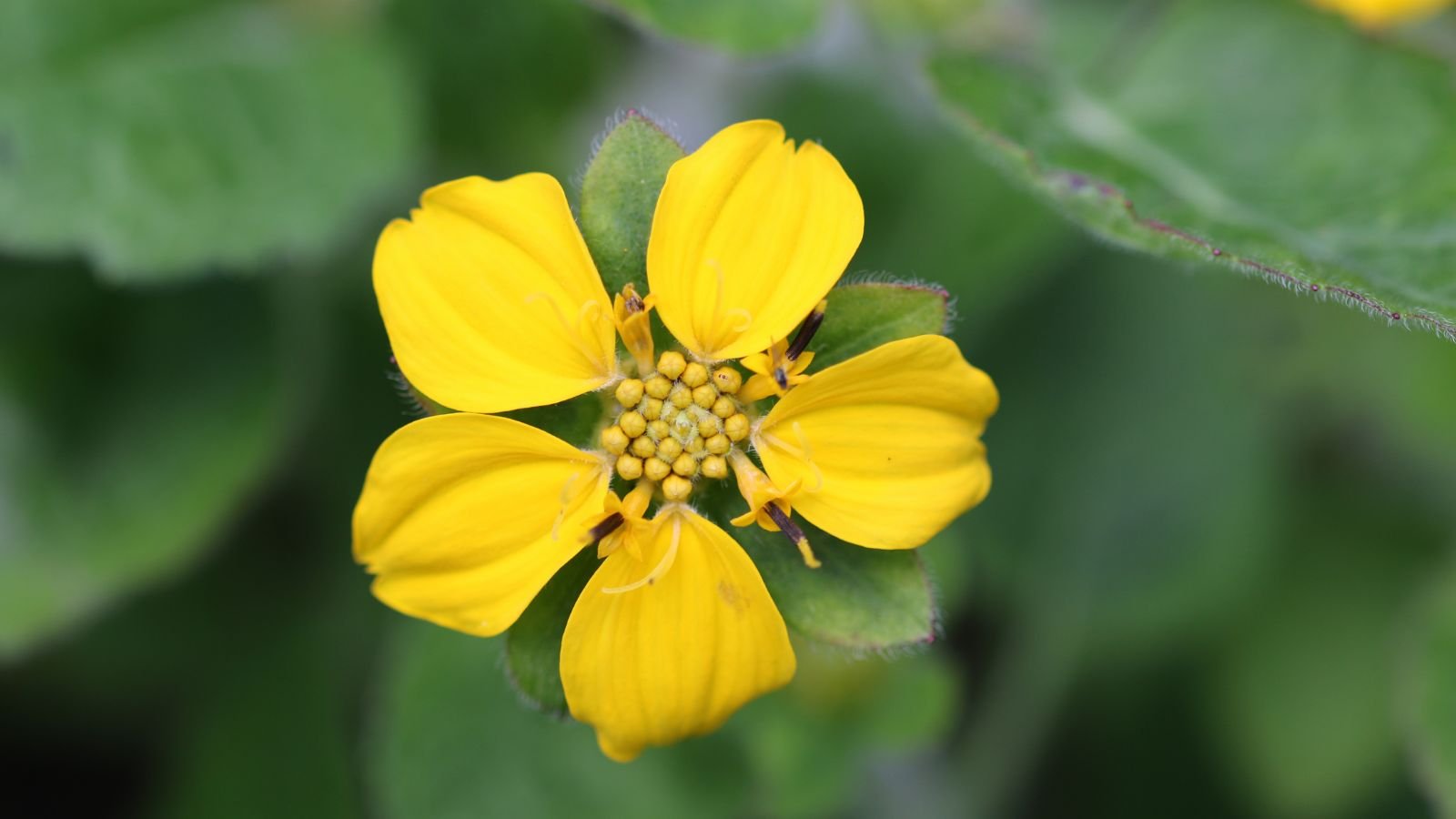
Commonly found in Florida, Georgia, Alabama, Mississippi and Louisiana, this variety is an ideal option for those looking for low-maintenance gardens. They bear yellow disk flowers as flowering stems rise from leaf axils in early spring with a low-growing mat of dark green leaves.
This variety is commonly referred to as green and gold. What makes var. australe different from the other varieties of the green and gold plant are its shorter flower stems and more rapid expansion of roots.
Chrysogonum virginianum var. brevistolon

Also known as the golden star plant, Chrysogonum virginianum var. brevistolon ground cover is a low-growing perennial. It is ideal for woodland paths and rock gardens. You can pair them up with Virginia bluebells and have a beautiful-looking garden!
It has bright green foliage and showy yellow disk flowers having a star-shaped structure. Their appearance resembles a daisy and has five rounded yellow petals. This variety can bloom from spring to fall in cooler climates.
However, if you live in warmer areas, the blooming may stop in hot summer days. Chrysogonum virginianum var. brevistolon is common in Georgia, Alabama, Carolinas, Tennessee, and Kentucky.
Chrysogonum virginianum var. virginianum
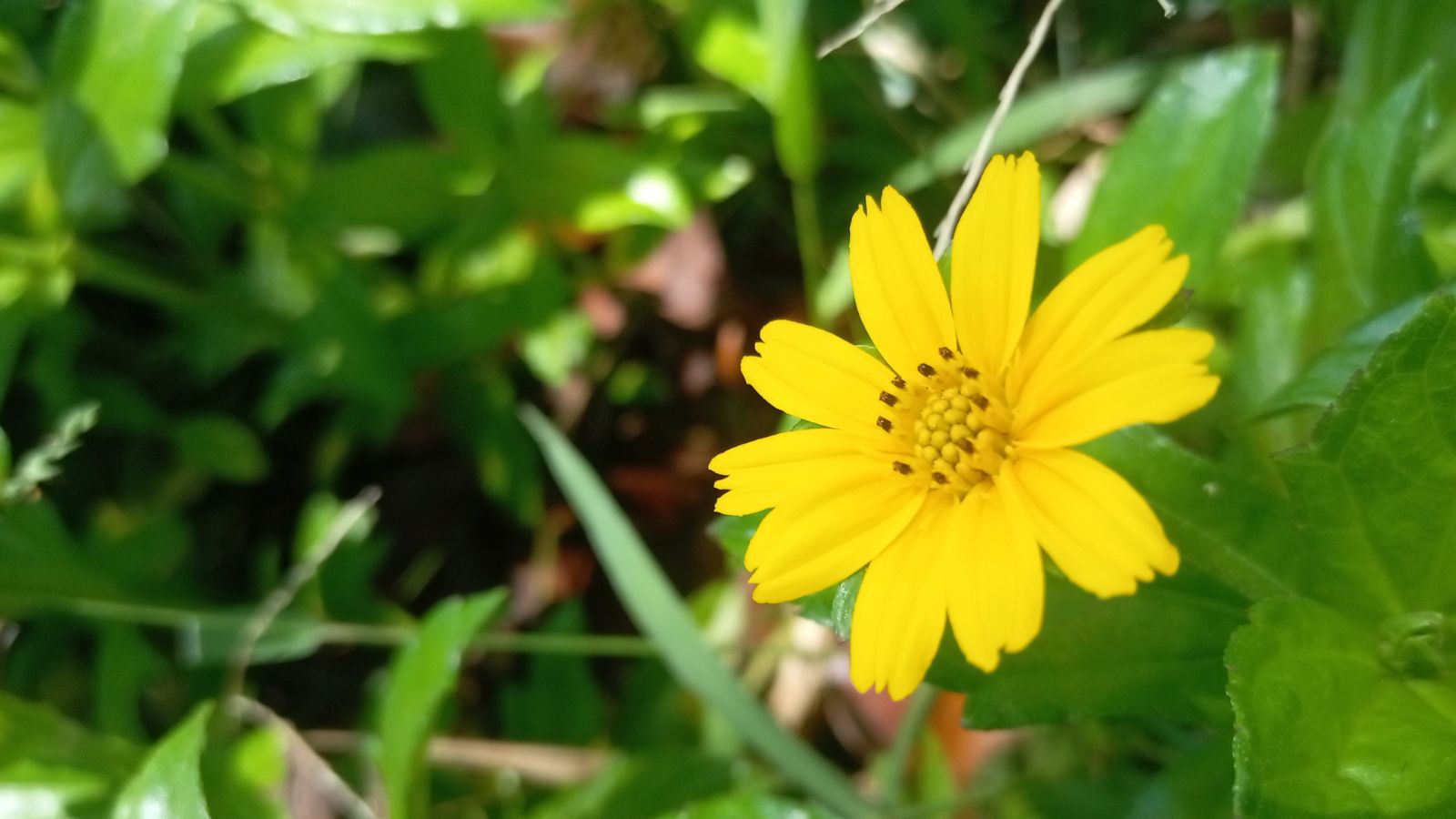
This cultivar of Chrysogonum virginianum is the most common variety that you’ll find. They produce daisy-like yellow flowers from March to October. May is the peak bloom time. The foliage is dark green and can grow up to nine inches in height. Chrysogonum virginianum var. virginianum is able to retain its evergreen leaves throughout the year and make an ideal choice for a rock garden with its low-growing best ground cover appearance.
Planting
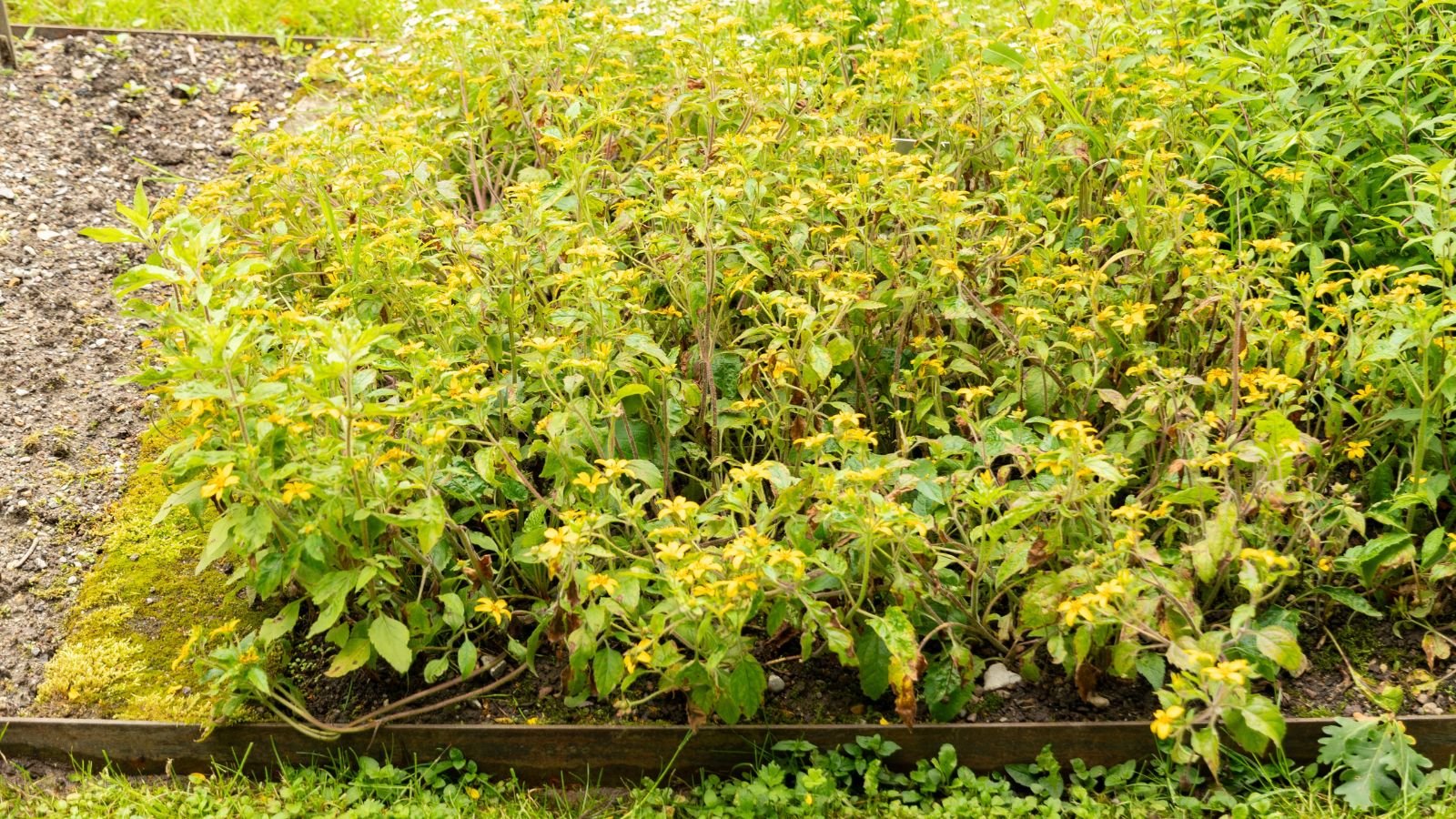
To plant Chrysogonum virginianum, start by choosing a location with partial to full shade and rich, well-draining soil. Begin by loosening the soil and mixing in compost or organic matter to provide nutrients and improve drainage.
Plant green and gold either by seed or by nursery-grown plants in early spring or early fall, spacing them about 12 to 18 inches apart to allow for spreading. If planting seeds, lightly press them into the soil surface without covering them deeply, as they need light to germinate.
Water the plants thoroughly after planting, and continue to keep the soil consistently moist (but not soggy) while the roots establish. Once established, Chrysogonum virginianum is relatively low-maintenance, requiring only occasional watering during dry spells and light mulching to retain moisture and suppress weeds.
How to Grow
Chrysogonum virginianum golden star is a low maintenance plant. You don’t have to worry about pest problems, plant diseases, and constant pruning. Also, it can handle average soil with moderate moisture.
Light

Chrysogonum virginianum plants grow well in locations with part shade to full shade, or areas of sun dappled part shade. They can tolerate full sun, but you have to make sure the soil remains consistently moist. The ideal location is a partly shady sun-dappled area.
Water

Chrysogonum virginianum plants prefer medium to wet soil. If you decide to plant green and gold in a location that is windy or gets more sun rather than part shade, you need to water the soil frequently or else it will dry up and your plants will suffer. Make sure to increase watering frequency during the heat of summer as well.
As long as you follow these watering guidelines for these native plants, you’ll achieve the moderate humidity needed to care for this plant.
Soil

Chrysogonum virginianum prefers neutral or acidic soil with pH value less than 6.8. Although it can handle wet soil that occurs along woodland paths, it allows for some drainage, or the plants’ roots will suffer root rot. Organically rich soils and consistently moist soils are best. Provide your planting area with amendments of rich potting soil or well-rotted compost to retain moisture and keep your plants happy.
You can add composted pine bark at 20% volume into heavy clay soils to avoid the possibility of roots rotting. In this same vein, well drained soils are a must!
Temperature
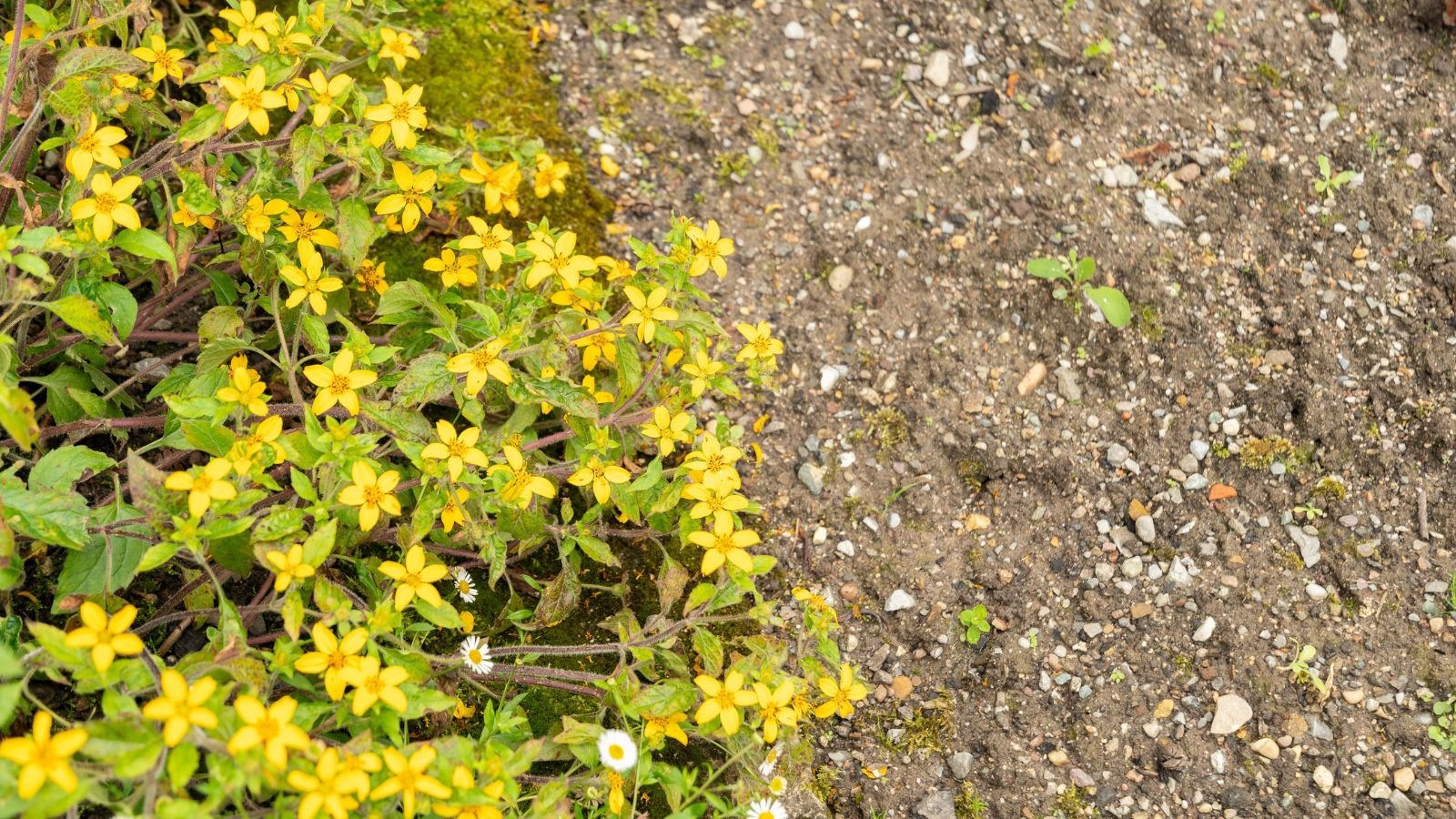
Extreme weather, and hot summer climates of Florida and Louisiana may cause the plant to brown. Give Chrysogonum virginianum plenty of shade if you live in a region with hot summers. In cold it will die back, but it should return in spring. Since it’s semi-evergreen, don’t worry about the plant browning in winter. This is a natural part of growing green and gold in colder regions.
Fertilizer

Although this yellow-flowered ground cover doesn’t absolutely need fertilizer, you can feed it with a slow-release, organic fertilizer if you choose. Mix into the top one inch of soil before planting, or amend by sprinkling in spring. Don’t overdo it, though, as many native plants can suffer from too much assistance in the form of fertilizer.
Maintenance

As flowering stems rise from the leaf axils of your foliage mat in spring, your Chrysogonum virginianum ground covers will produce their bright yellow flowers. You can snip these flower stems as the flowers fade in the fall to prevent self-seeding. Feel free to prune the green parts of the plant at any time to provide air circulation and shape the plant.
Although most gardeners opt to grow as a ground cover, you can easily cultivate in a container garden as well. To repot, simply divide it by its rhizomatic roots, looking for separations between growth points, and move the divisions to another pot. Pretty soon you’ll have another full container or growth!
Propagation
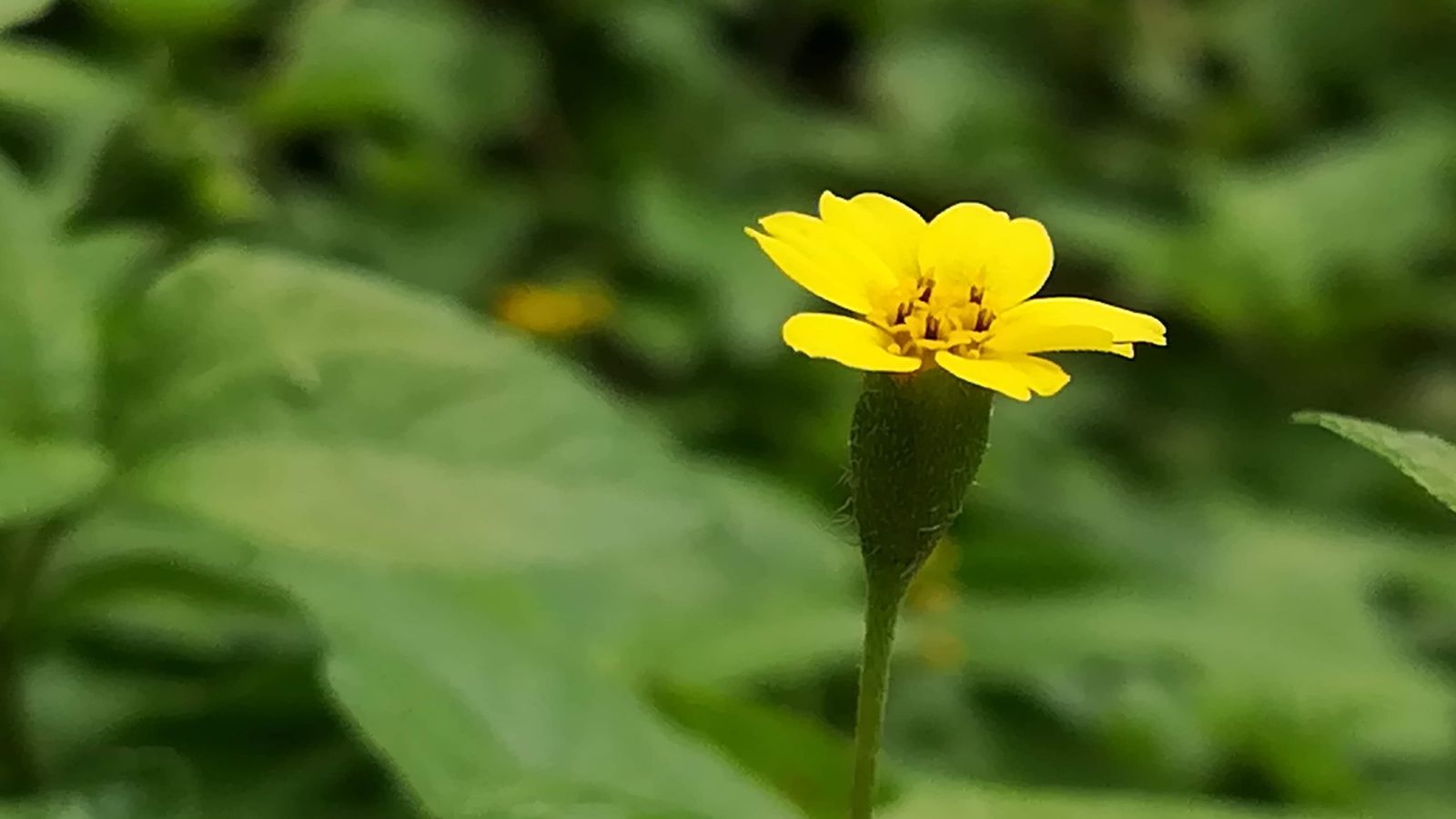
To propagate Chrysogonum virginianum, you can use the softwood cutting technique. For this, you need a variety that produces stolons. These stolons can be cut and dug to extract the root from the soil and transplanted elsewhere.
Another way to propagate is through the division of the crown. The best season to propagate by division is in late spring. Follow the instructions in the Repotting section to adequately divide the plant and replant in well drained soils.
In this season, seeds can be found around the base of established plants. You can store up these seeds and sow in a fine potting mix at 70-75°F (21-24°C). The seeds will start germinating in three weeks.
Common Problems
If you’re looking for a problem-free ground cover to boost the aesthetic appeal of your home garden, Chrysogonum virginianum is the perfect answer. It gives you the least level of trouble and is easy to take care of. However, you may run into a few key issues.
Growing Problems
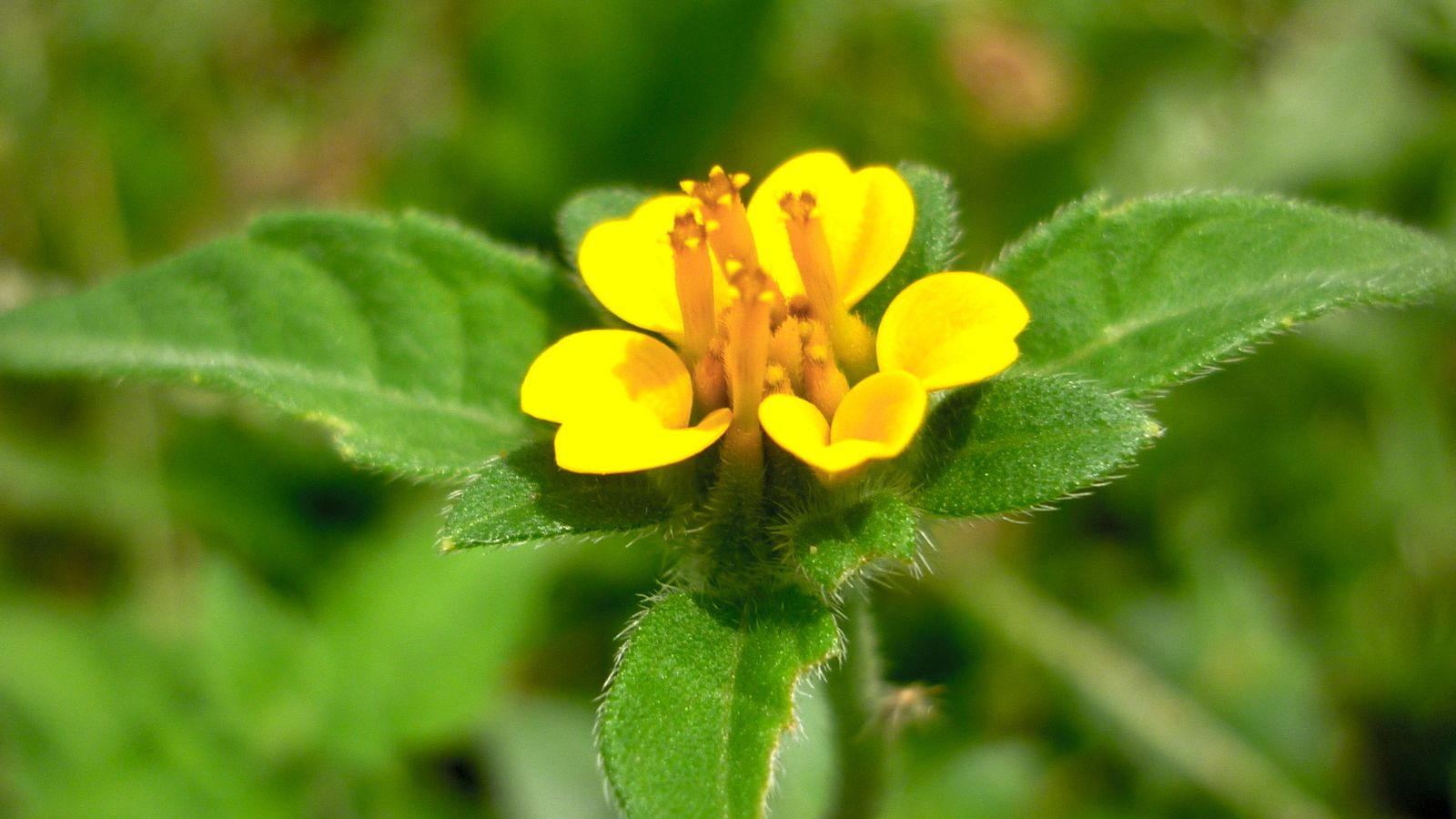
Most of the issues you’ll run into can be solved by preparing a good soil mixture and watering appropriately. As mentioned before, they need a part to full shade and consistently moist soils. If you get those two conditions correct, you shouldn’t have any issues.
Pests

They rarely experience pest problems. However, snails and slugs can eat holes in newer spring foliage. It won’t cause any serious long-term damage, though. You can eliminate them by using traps.
Diseases

Every so often your golden star, with its star-shaped flowers, may run into powdery or downy mildew issues. Both present as fungal growth on leaves. Downy mildew growths are on both the leaf surface and undersides. Powdery mildew grows solely on the tops of leaves and flower stems.
For care for those particular diseases, remove affected leaves and flower stems from the foliage mat as they crop up. Try to consistently prune to promote good air circulation, and keep other plants away from affected ones.
Frequently Asked Questions
What fertilizer do I need for green and gold?
A slow-release, organic fertilizer is best. You can mix it in the planting soil at the time of transplanting your starts.
I have neutral soil. How do I make it ideal for green and gold ground cover?
Neutral soil works fine for green and gold. To make the soil acidic, you can incorporate dolomitic limestone in the planting area to bring the pH down to below 6.8.
Which variety of green and gold is best for larger woodland sites?
Chrysogonum virginianum var. australe is ideal for larger woodland sites because of their ability to rapidly spread.
Is Chrysogonum virginianum an evergreen?
Yes, unless winters are significantly cold, or the plant is placed in full sun in hot summer climates, green and gold is semi-evergreen.
Is Chrysogonum virginianum deer resistant?
It is! Because of the hairy leaves that irritate deer tongues, it’s a great deer-resistant plant.
Is Chrysogonum virginianum invasive?
While they aren’t classed as an invasive species, plant these ground cover plants where you’re expecting them to spread out, or where you’re able to reach them for consistent maintenance.
Is Chrysogonum virginianum edible?
The berries produced by the plant along its leaf axils are edible for wild birds.
How long does green and gold bloom?
Green and gold is a long-bloomer. Its flowers open in late spring and fade in fall, revealing lovely berries.









